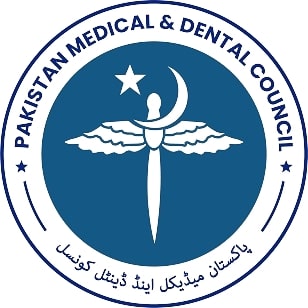FREQUENCY AND ANTIMICROBIAL SUSCEPTIBILITY OF KLEBSIELLA SPECIES ISOLATED FROM URINE CULTURES AT A TERTIARY HEALTHCARE FACILITY OF LAHORE
DOI:
https://doi.org/10.59058/jaimc.v22i1.213Keywords:
Antibiotic susceptibility, Frequency, Klebsiella, UTIAbstract
Background and Objective: Klebsiella is found ubiquitously in nature and is a potential pathogen to infect different anatomic sites including urinary tract. Due to high resistance to antimicrobials it is considered as one of the most challenging pathogens. The study aimed to determine the frequency and antimicrobial sensitivity of Klebsiella species isolated from urine.
Methods: The data of urine cultures conducted during 1st Sep 2021 to 31st Aug 2022 was collected through Electronic Medical Record system. Uropathogens were recognized based on culture characteristics and biochemical tests with API-20E (bioMérieux) profile. Antibiotic susceptibility and extended spectrum beta- lactamase (ESBL) detection was performed by disc/combined disc diffusion using Kirby Bauer method.
Results: Of 2438 urine samples submitted for culture during the study period, 746 (30.6%) showed significant growth of a known uropathogen. The frequency of Klebsiella was 14.75% which was second most common uropathogen after E. coli (57.37%). Other isolates reported were Enterococcus (12.87%), Candida (8.71%), Pseudomonas (2.68%), Staphylococcus (1.48%), Proteus (1.07%) and Citrobacter species (1.07%). The isolates showed high sensitivity to imipenem (87.3%) followed by meropenem (85.5%), amikacin (84.6%) and fosfomycin (81.5%). A reduced sensitivity was observed against gentamicin (68.2%), piperacillin-tazobactam (61.8%), nitrofurantoin (58.2%) and cefotaxime (50%), but the least sensitivity was seen for ciprofloxacin (40.9%), cotrimoxazole (36.4%), cefuroxime (20%) and ampicillin (10%). Of all isolates 37 (33.6%) were ESBL producers.
Conclusion: Carbapenems, amikacin and possibly fosfomycin are the most efficient drugs for treating UTI due to Klebsiella species in our hospital setting. An on-going surveillance for ESBL producers as well as carbapenemase-producing Klebsiella pneumoniae (KPC) is needed
Downloads
Published
How to Cite
Issue
Section
License
Copyright (c) 2024 Tariq Mahmud Tariq, Samia, Mariam, Asma , Sana

This work is licensed under a Creative Commons Attribution 4.0 International License.
The articles published in this journal come under creative commons licence Attribution 4.0 International (CC BY 4.0) which allows to copy and redistribute the material in any medium or format Adapt — remix, transform, and build upon the material for any purpose, even commercially under following terms.
-
Attribution — You must give appropriate credit, provide a link to the license, and indicate if changes were made. You may do so in any reasonable manner, but not in any way that suggests the licensor endorses you or your use.
- No additional restrictions — You may not apply legal terms or technological measures that legally restrict others from doing anything the license permits.
The editorial board of the Journal strives hard for the authenticity and accuracy of the material published in the Journal. However, findings and statements are views of the authors and do not necessarily represent views of the Editorial Board. Many software like (Google Maps, Google Earth, Biorender (free version)) restricts the free distribution of materials prepared using these softwares. Therefore, authors are strongly advised to check the license/copyright information of the software used to prepare maps/images. In case of publication of copyright material, the correction will be published in one of the subsequent issues of the Journal, and the authors will bear the printing cost.










